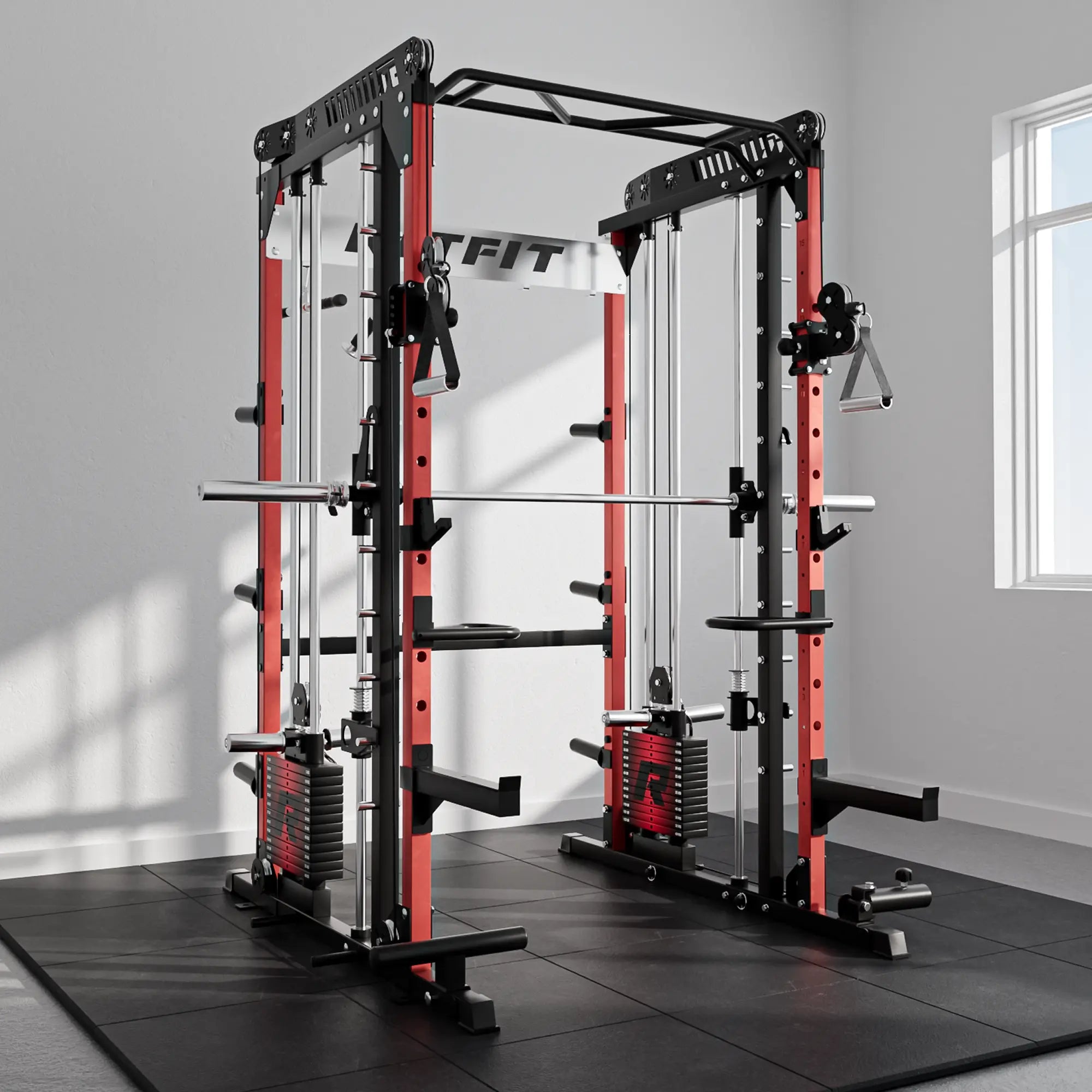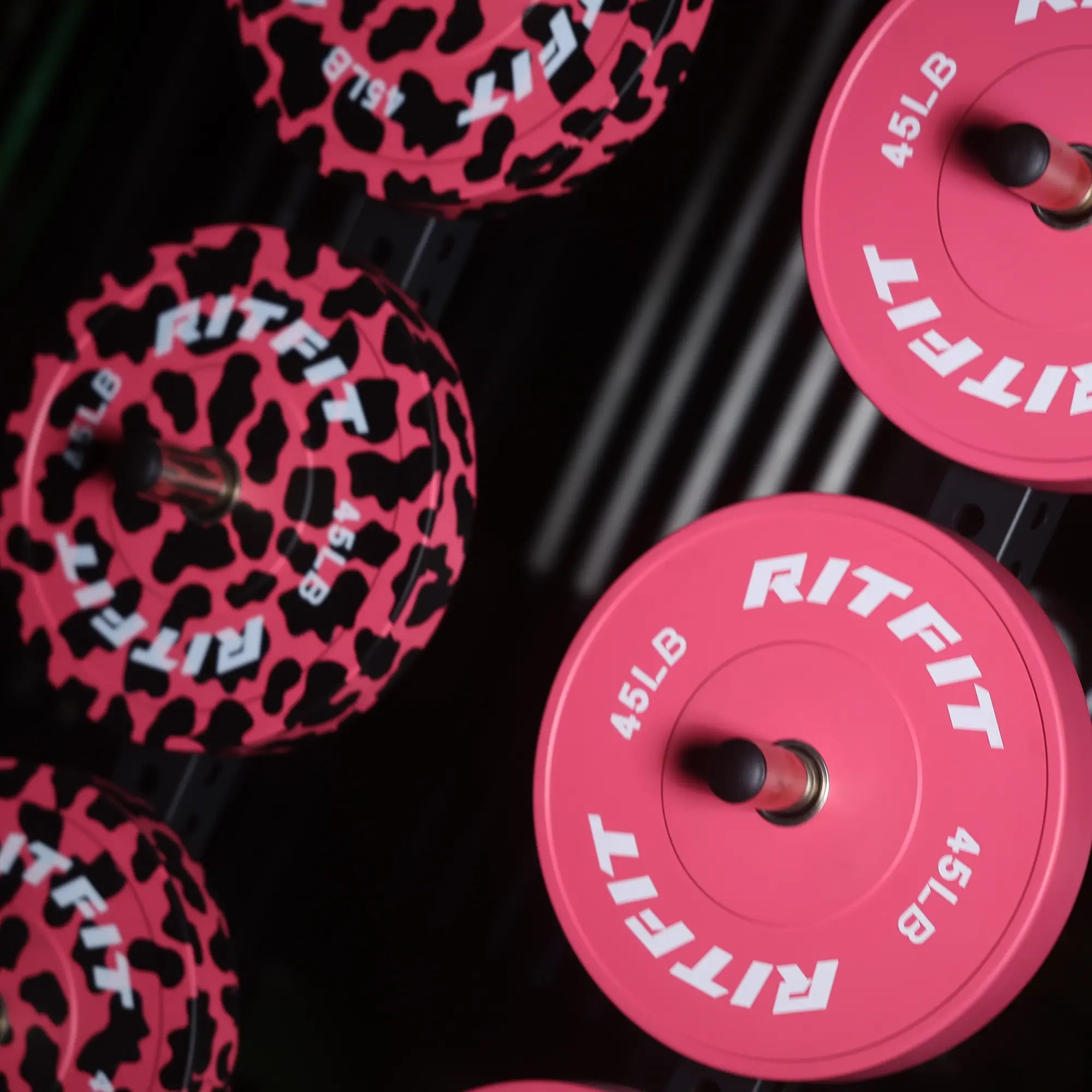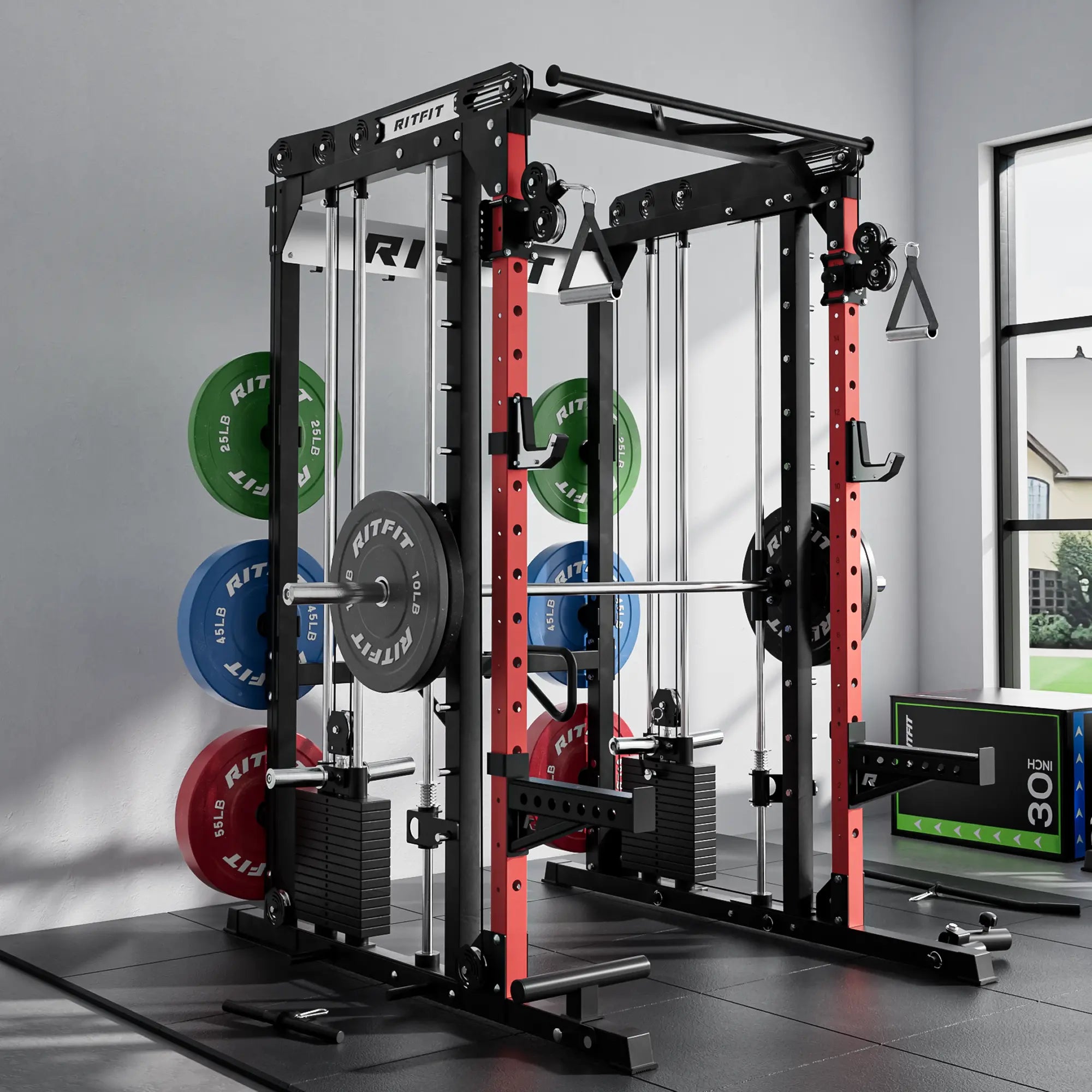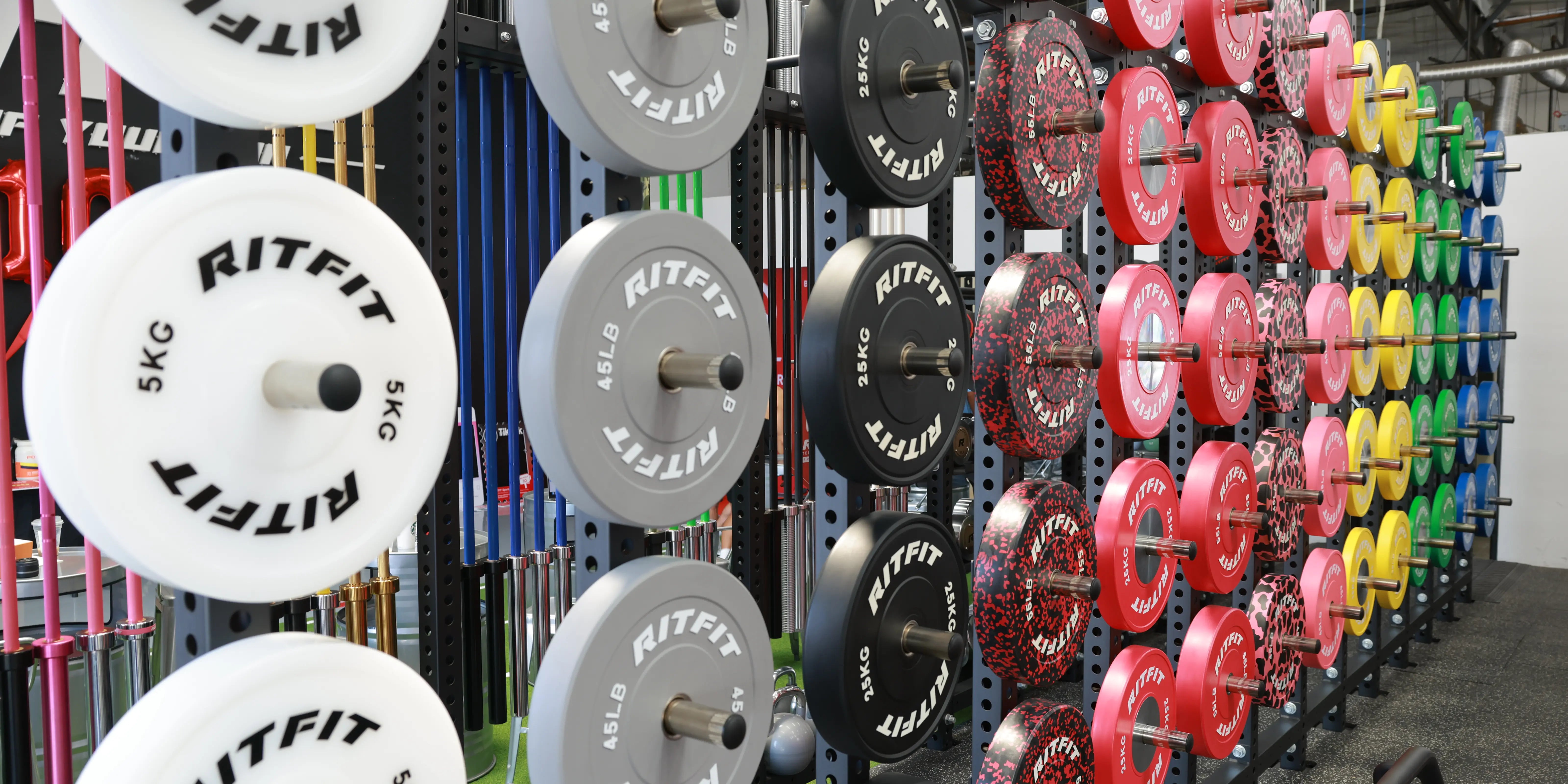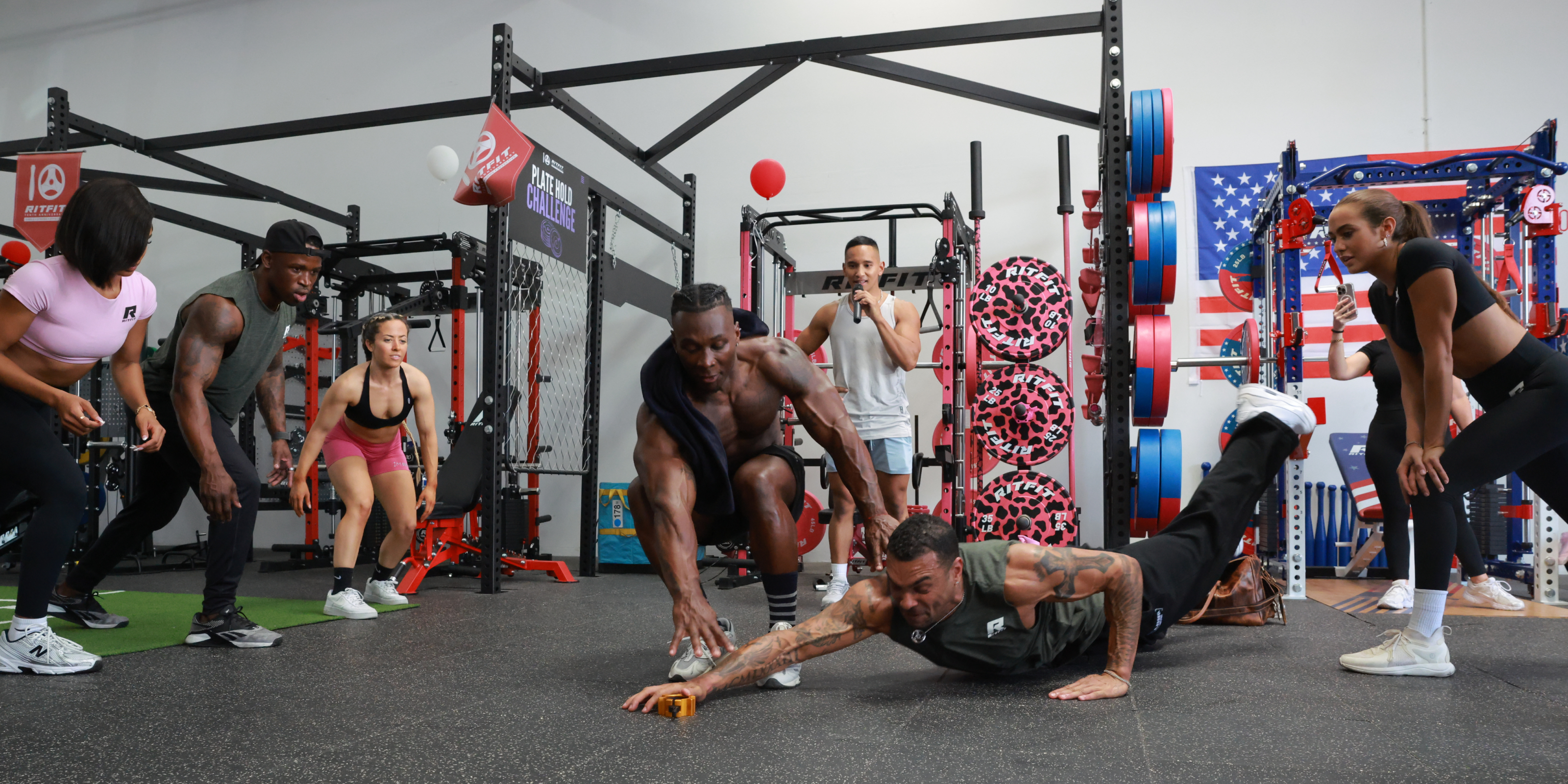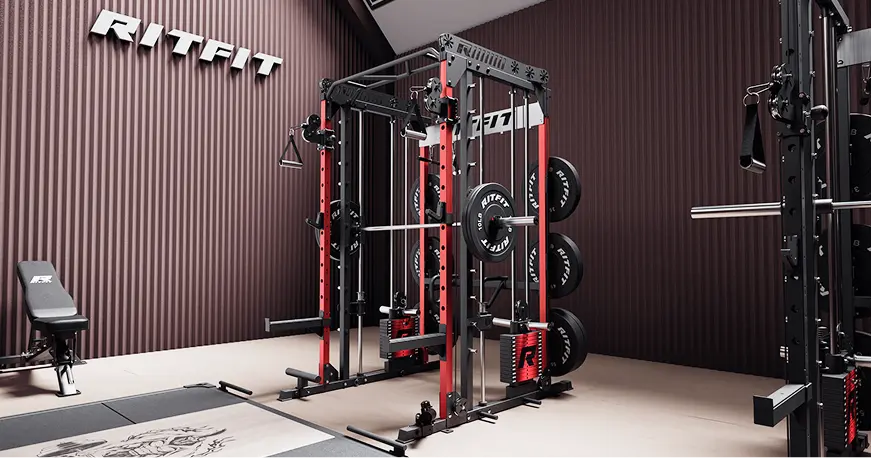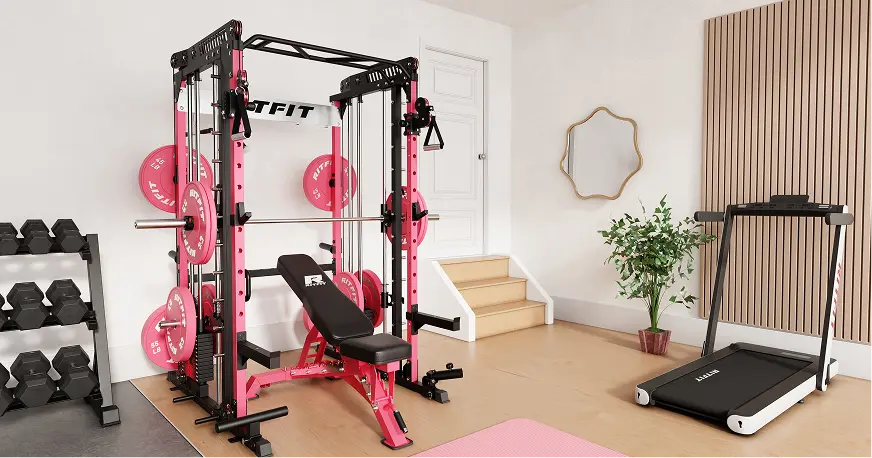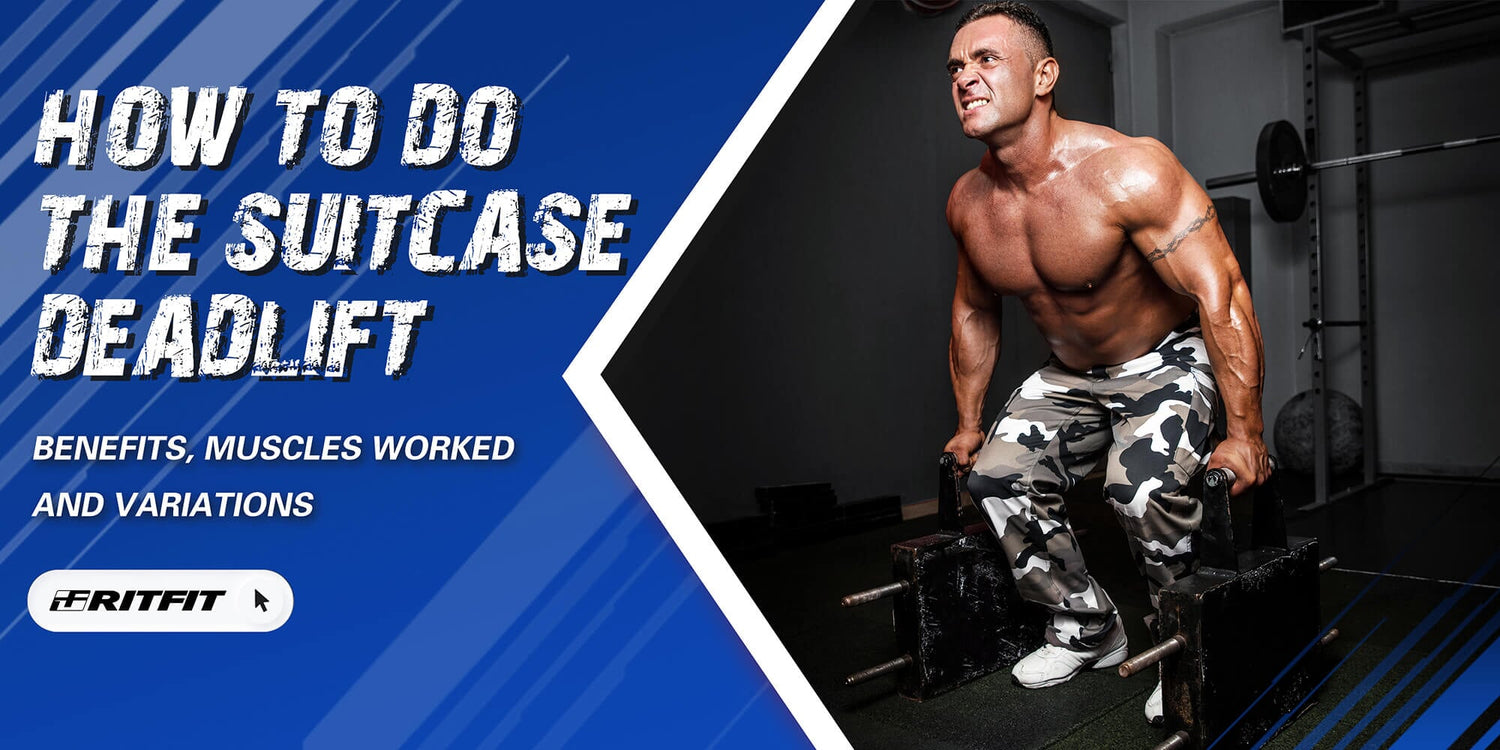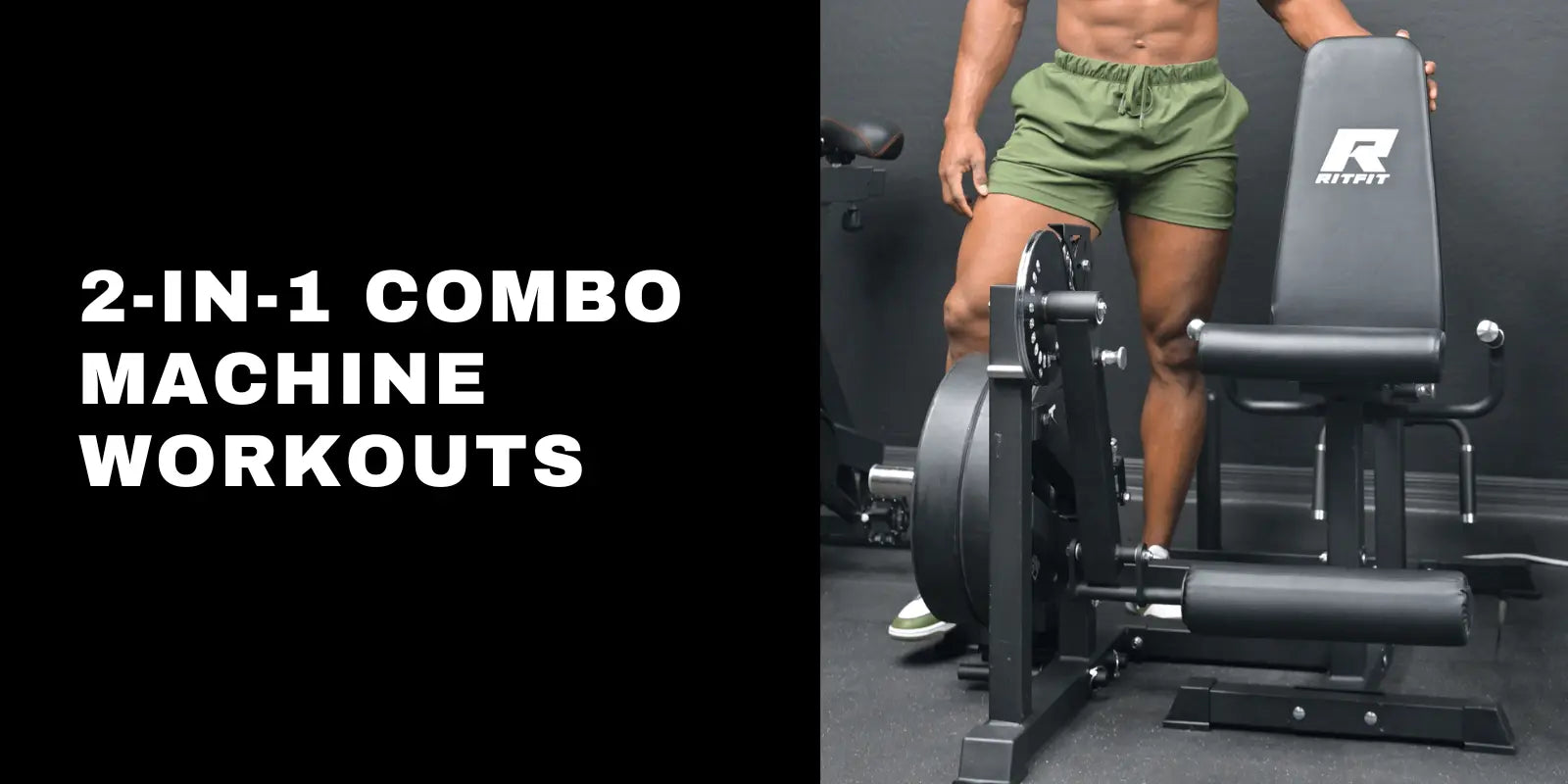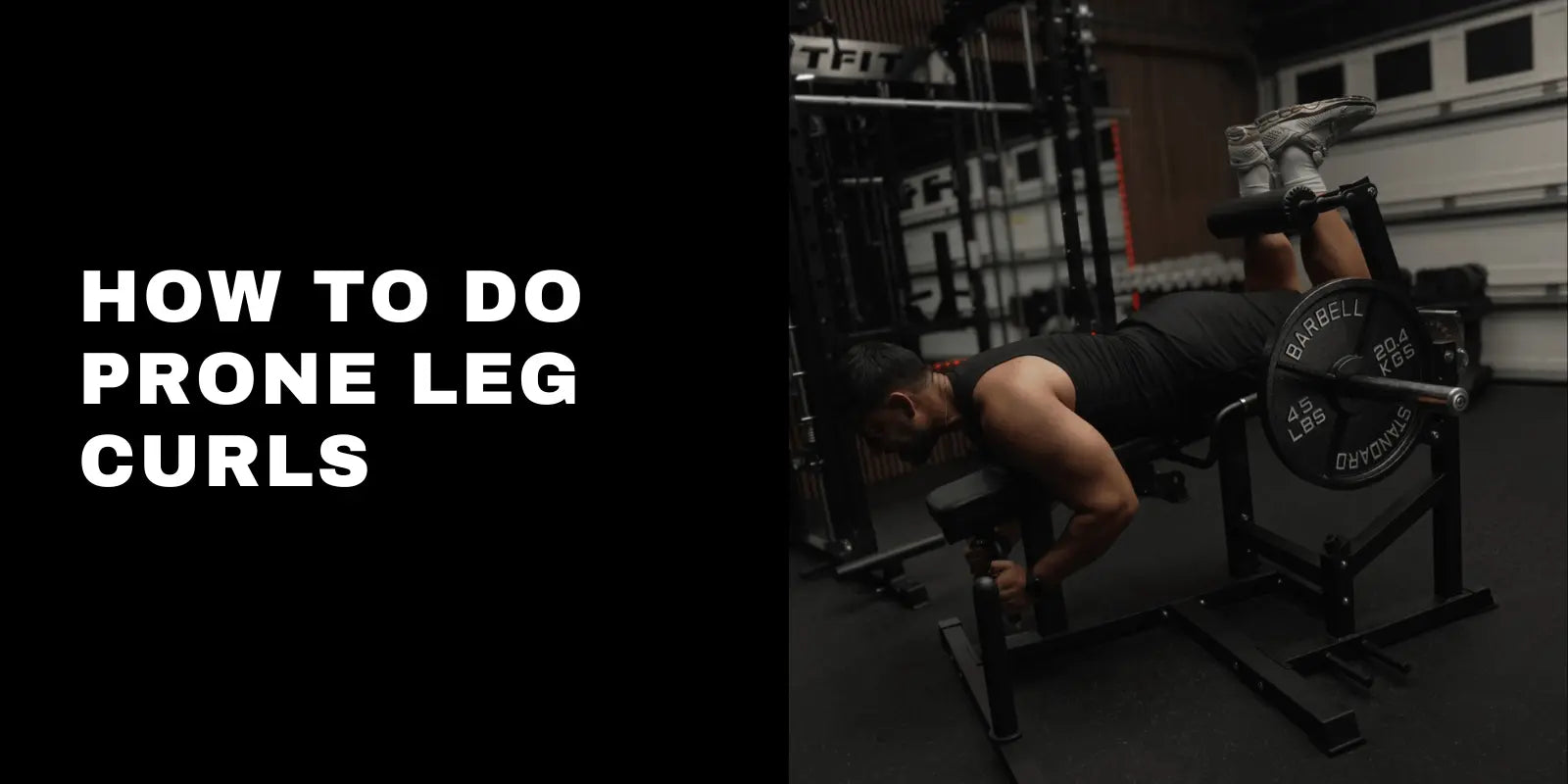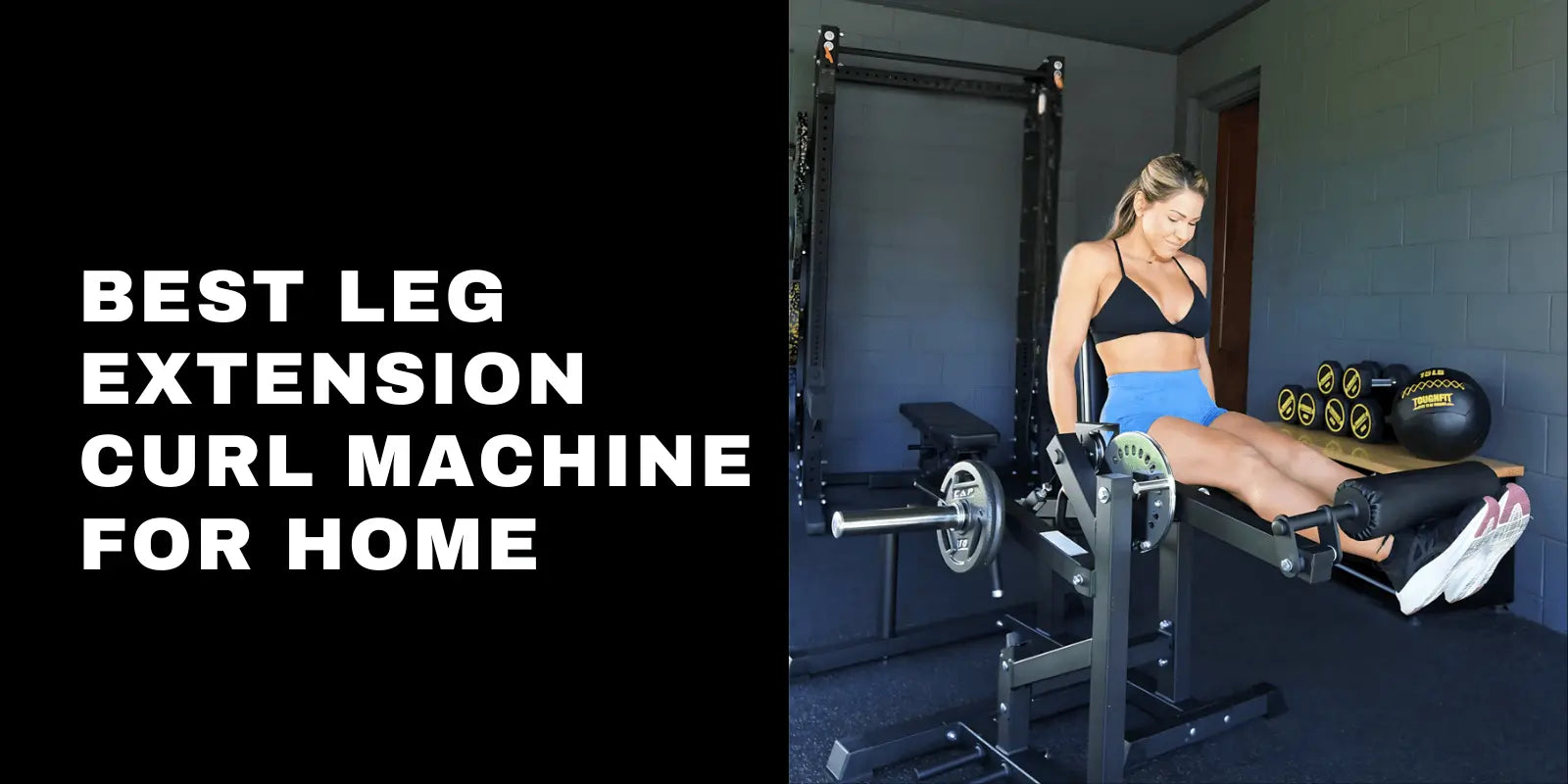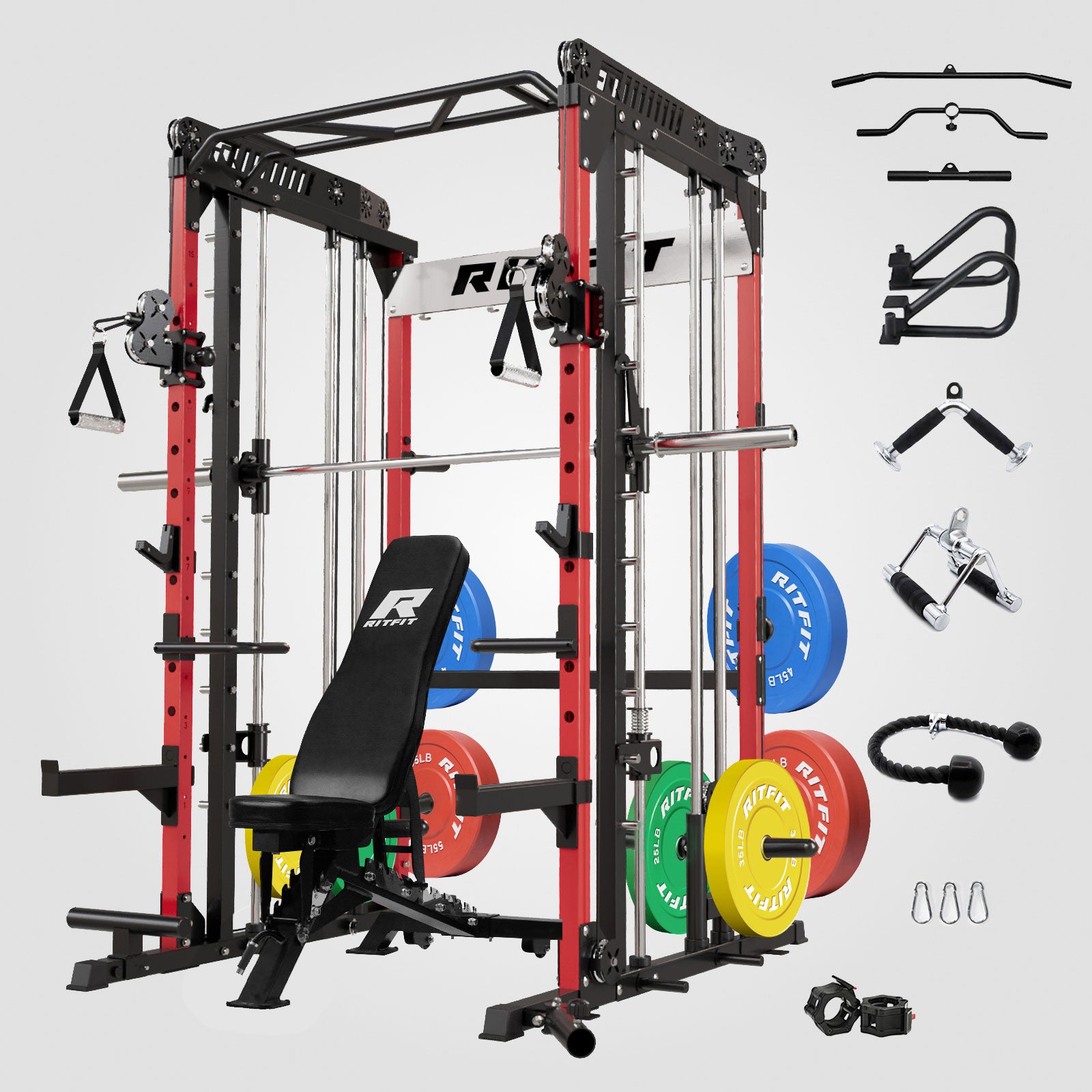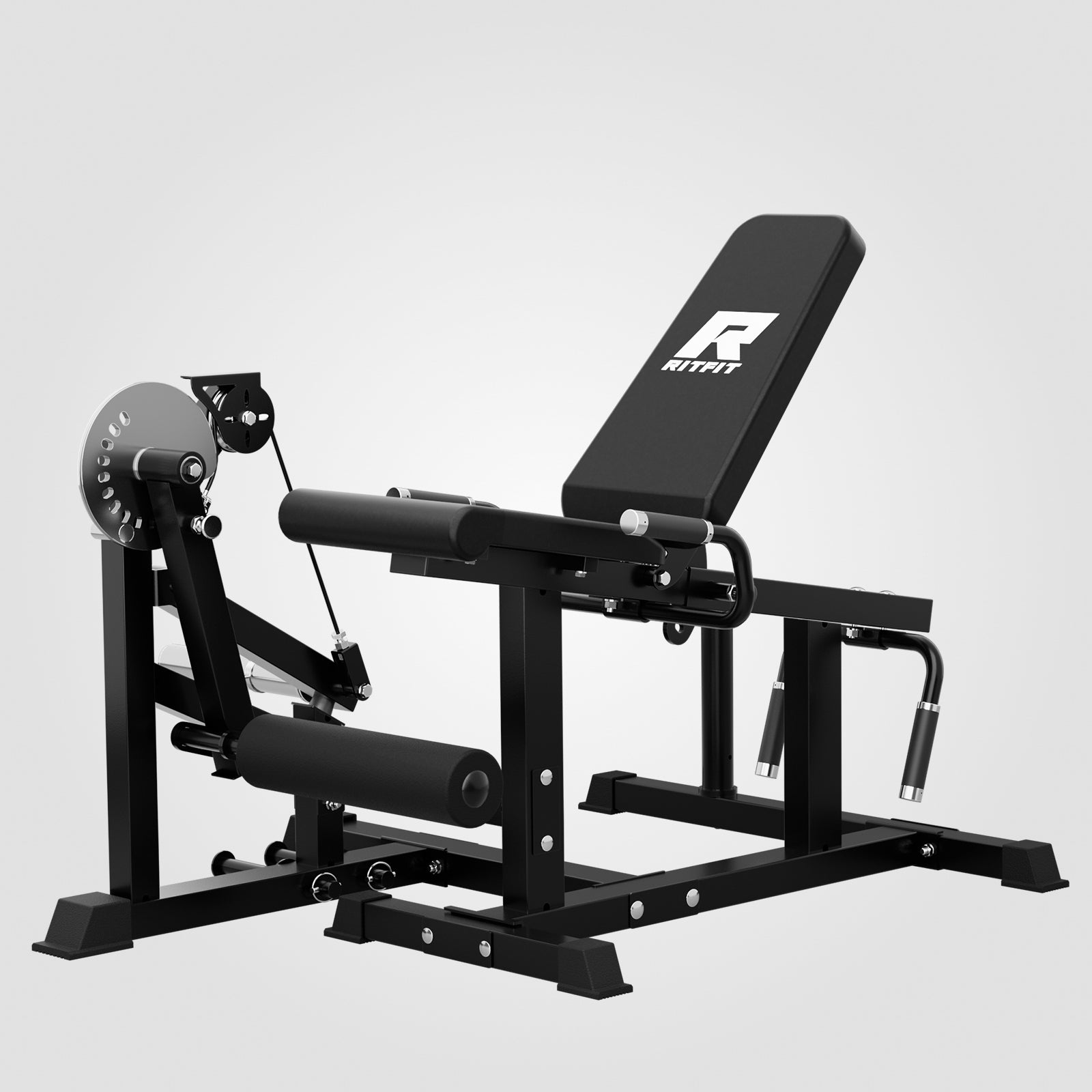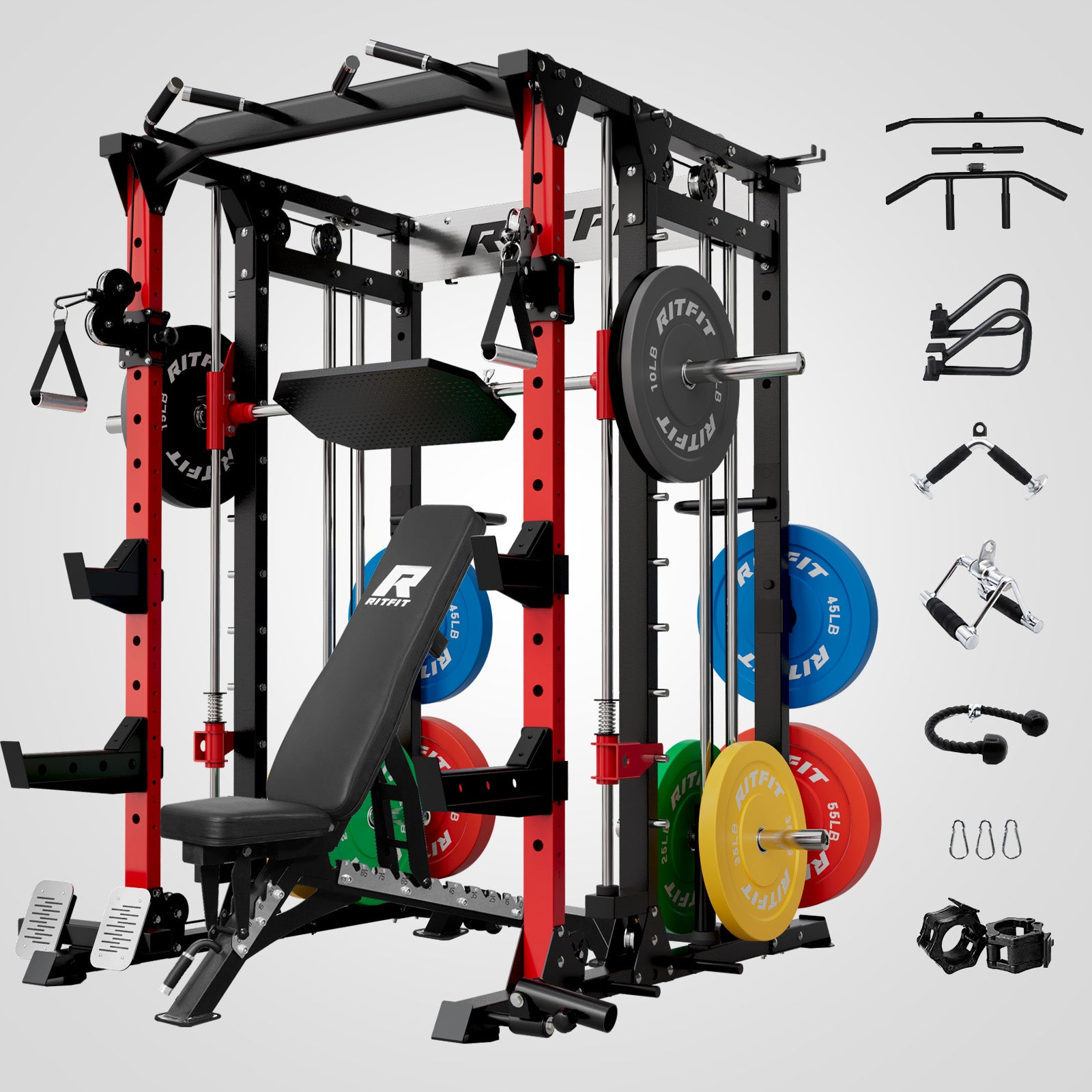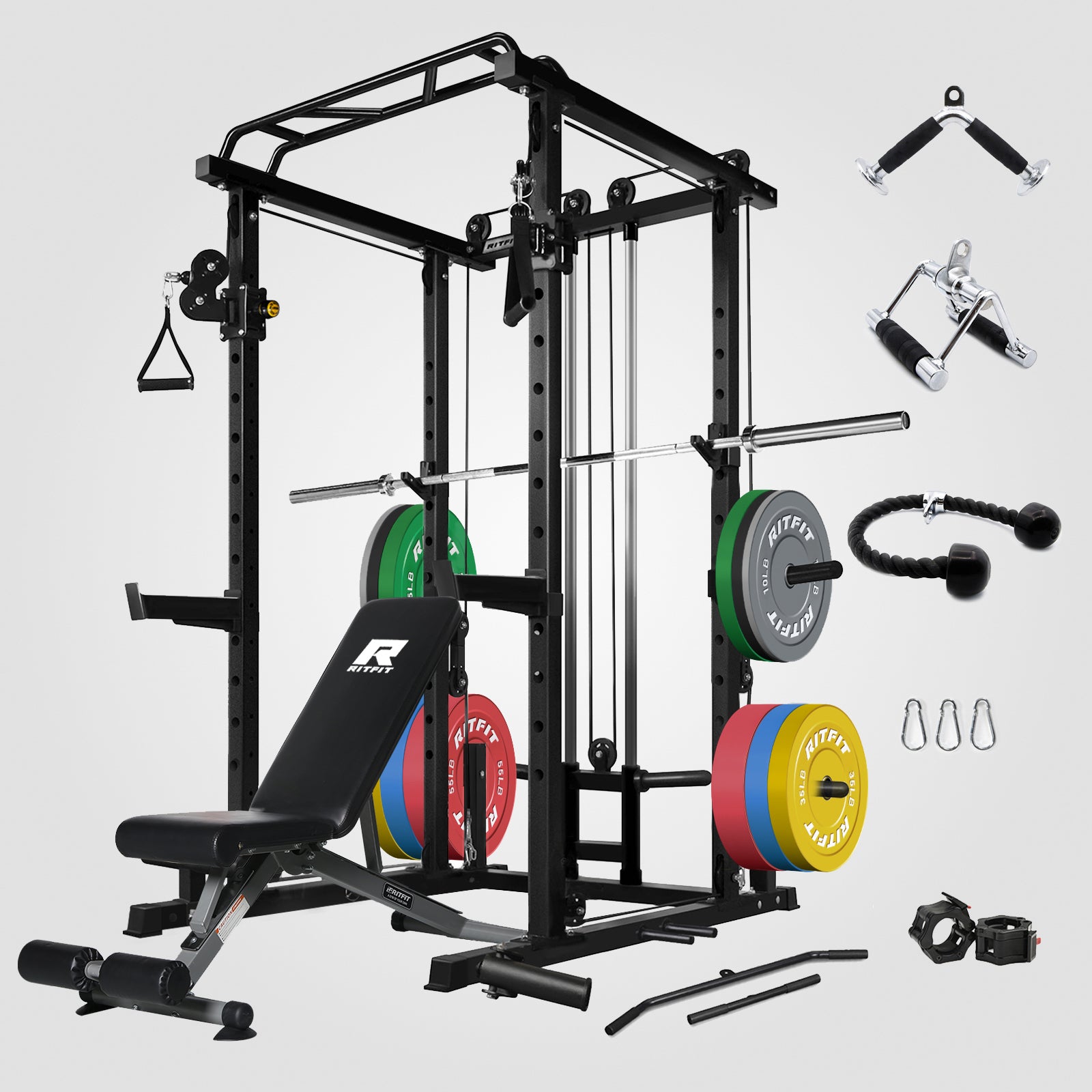Table of Contents
- What is a Suitcase Deadlift?
- Who Should (and Shouldn’t) Do the Suitcase Deadlift?
- Suitcase Deadlift Form and Techniques
- Suitcase Deadlift Muscles Worked
- Benefits of the Suitcase Deadlift
- Suitcase Deadlift Variations & Progressions
- Suitcase Deadlift Alternatives
- Programming the Suitcase Deadlift
- Suitcase Deadlift FAQs
Very few exercises train the muscles on the side of your body as directly as the suitcase deadlift. This unilateral deadlift variation challenges your core, hips, and grip all at once, while still giving you the strength and muscle gains you expect from a hinge pattern.
Performed correctly, the suitcase deadlift teaches you to resist side-bending, control your posture under load, and carry awkward objects in everyday life without wrecking your lower back.
In this guide, you’ll learn exactly how to do the suitcase deadlift with safe, spine-friendly form, how to progress it, which muscles it works, and how to plug it into a full-body strength routine.
What is a Suitcase Deadlift?
A suitcase deadlift is like picking up a heavy suitcase from the floor next to you instead of lifting a bar directly in front of your shins, like a regular deadlift.
You can use a dumbbell, kettlebell, or barbell, but the weight must be on one side of your body. This weight that isn't in the center makes your core, especially your obliques, work hard to keep your torso straight and your spine straight. Unilateral loading (like the suitcase deadlift) significantly increases the activation of the contralateral external oblique and erector spinae to resist lateral flexion moments[1].
Suitcase deadlifts are a full-body exercise that works both your upper and lower body. They make you stronger for everyday tasks like carrying groceries, lifting a heavy bag into the car, or moving boxes around the house.
Who Should (and Shouldn’t) Do the Suitcase Deadlift?
The suitcase deadlift is a smart choice if you:
- Already know the basic hip-hinge technique (e.g., RDLs or conventional deadlifts).
- Want better core stability, grip strength, and balance between your left and right sides?
- Train at home with limited equipment and need a lot of “bang for your buck” from each exercise.
You should be cautious or talk to a medical professional first if you:
- Have a history of disc herniation, nerve root symptoms (numbness, tingling, shooting pain down the leg), or recent acute lower-back injury.
- Have unmanaged hip, knee, or pelvic pain that gets worse with bending or lifting.
- Pregnant women (especially in later trimesters) or recently postpartum women should get clearance and start with unloaded variations first.
If any movement causes sharp or escalating pain, not just normal muscle fatigue, stop immediately and consult a qualified healthcare provider.
Suitcase Deadlift Form and Techniques
How to Do the Suitcase Deadlift (Step by Step)
This deadlift variation is a hip-dominant strength exercise that works your legs, glutes, back, and core. Do these things to keep your spine healthy and your technique sharp.
Step 1: Get your weight and stance right
Put your feet about hip- to shoulder-width apart. Put a dumbbell or kettlebell on the floor just outside one foot, about in line with your mid-foot, not way out by your toes.
Step 2: Hinge down with a neutral spine
Create a soft bend in your knees, then push your hips back as if you’re closing a car door with your glutes. Keep your chest “proud,” ribs stacked over your hips, and your spine neutral as you reach down to grab the handle with one hand.
Step 3: Brace before you lift
Take a breath in, tighten your abs as if you’re about to be lightly punched in the stomach, and pack your shoulder down and back on the working side. Your free arm can hang naturally or lightly touch your oblique to help you feel the tension.
Step 4: Drive through the floor
Press your whole foot into the ground and stand up by extending your hips and knees together. Keep a slight knee bend—do not try to lift “without bending your knees”—and keep the weight close to your side as you rise. Focus on staying tall without letting your torso tip toward the weight.
Step 5: Take charge of lowering the weight
To change the direction of the motion, first push your hips back, then bend your knees slightly as the weight moves down the side of your leg. Hold your spine straight and your core tight until the weight is close to the floor again. Stop, reset your brace, and do the reps you want before switching sides.
Checklist for Form Before Each Set
Before you start your first rep, go through this short list:
- The spine should be straight, with no rounding or too much arching.
- Soft knee bend, not locked out.
- Weight lined up with your mid-foot beside you.
- Ribs stacked over hips, not flared up.
- No leaning toward the weight; shoulders stay level.
Suitcase Deadlift Common Mistakes to Avoid
Not Bracing Your Core
Keeping the core intact is a crucial part of this exercise. Since most of the pressure builds up on the core, it is important to brace it firmly and ensure the body doesn’t lean in any direction.
Fix it:
Think, “rib cage down, belt tight.” Take a breath in, tighten your abs, and keep your torso locked in place as you move from your hips—not your spine.
Starting Too Heavy
Starting with the heaviest weights is unwise. If you start heavy, you will not only ruin your posture but also put yourself in danger.
Fix it:
Begin with a weight that allows you to keep perfect form for every rep, leaving 1–3 reps “in the tank” (RIR). Only increase the load when your form looks and feels rock-solid on both sides.
Putting Unnecessary Pressure on your knees
The knees aren't the focus of this exercise. Rather, the movement of bending to go down mainly comes from the hip hinge rather than the knee bend. Furthermore, keep in mind the knees should not bend outwards.
Fix it:
Think “hips back first, knees soft second.” If you feel your knees shooting forward or caving in, reset and focus on sending your hips back while keeping your knees tracking over your mid-foot.
Letting the Weight Drift Forward
Allowing the dumbbell or kettlebell to swing away from your body increases shear stress on your lower back and makes the lift feel much heavier than it needs to be.
Fix it:
Keep the weight close to your side, roughly brushing your outer thigh on the way up and down. If you watch yourself side-on, the weight should stay over your mid-foot.
Rounding the Lower Back
Rounding your lower back under load is one of the fastest ways to irritate sensitive spinal tissues. This usually happens when the weight is too heavy, you rush the reps, or you hinge too deep for your current mobility.
Fix it:
Limit your range of motion to the point where you can maintain a neutral spine. If needed, use an elevated version (weight on a low box) until you build the control and mobility to reach the floor safely.
Suitcase Deadlift Muscles Worked
Deadlifts, including the suitcase variation, train multiple major muscle groups to build functional strength and improve mobility.
Primary Muscles: Obliques & Deep Core
The core is a group of trunk and hip muscles that surround the spine, abdominal organs, and hips. Strong core muscles are necessary for even weight distribution across the upper body.
With the suitcase deadlift, your obliques and quadratus lumborum (QL) work hard to resist side-bending. Instead of crunching you sideways, these muscles act like a built-in weight belt, keeping your spine tall and stable against the asymmetrical load.
Glutes
The largest muscle in the body is the gluteus maximus. Because deadlifts focus on hip extension, they are a staple exercise for glute development.
In the suitcase version, your glutes on both sides help drive you up from the bottom and stabilize your pelvis, especially as you fight the urge to lean toward the weight.
Upper and Lower Back
The back muscles are a group of strong paired muscles at the back of the trunk. A key component of all deadlift variations is maintaining a straight, controlled back.
Your lats, spinal erectors, and mid-back muscles help keep your torso stiff and your shoulders level, turning the suitcase deadlift into a powerful postural training tool as well as a strength movement.
Secondary Muscles
Several other muscle groups support the lift, including
- Hamstrings and quads, which help control the hinge and assist with standing up.
- Forearms and grip, which are heavily challenged by holding a heavy weight with just one hand. High-intensity gripping activates the rotator cuff via the irradiation effect, stabilizing the shoulder[2].
The muscles in your calves and feet are crucial for maintaining balance when the weight pushes you towards one side.
Benefits of the Suitcase Deadlift
- Stronger core: As already discussed, your obliques will be required to work the extra mile for body balancing. The idea is that by moving your body's center mass, you may train your oblique while lifting the weight with one hand.
- Improved balance and stability: Helps correct strength imbalances. Research supports unilateral training for correcting bilateral deficits and improving postural control[3].
- Build a firm grip: Not having a good grip can be a major setback when it comes to strength training. Deadlifts, in particular the suitcase variant, help significantly with improving the grip and allowing lifters to hold weights longer.
- Improved hip hinge: Hip hinge is part of several workouts, and perfecting it is the key to effective exercising. It can be challenging, especially when it comes to maintaining a neutral torso. However, incorporating suitcase variation can help you improve it.
- Increased muscle mass: Putting pressure on your arms, this workout is effective in helping people build muscle mass. Many people who aim for a bulky look are inclined toward deadlifts.
Better real-life strength:
Carrying groceries in one hand, moving a suitcase through an airport, or lifting a toddler from the floor all become easier when your body is used to managing uneven loads.
Injury-resistant spine and hips:
Biomechanical analysis confirms that suitcase deadlifts place less shear force on the lumbar spine than conventional deadlifts while challenging lateral stabilizers[4].
Suitcase Deadlift Variations & Progressions
Instead of treating each variation as random, think of them as a progression from easiest to hardest.
Single Arm Suitcase Deadlift
Single arm deadlift focuses on one side of your body at a time. Stand with your feet slightly wider than the hips. Hinge your hips to go down and pick the weights. Keep your knees straight and core intact. Go up to the standing position. Reverse the movement to go down and start the second rep.
Kettlebell Suitcase Deadlift
Stand straight with your feet hip-width apart. The kettlebell will be on the side so that when the suitcase movement is executed the grip comes perfectly. Make sure your body is balanced and is not leaning toward any one direction.
Dumbbell Suitcase Deadlift
The posture of this variant is similar to the conventional one. The difference is of the equipment as instead of the kettlebell, in this, you will have a dumbbell to lift. You can either the kettlebell or a dumbbell depending upon your personal preference as the muscles worked is quite similar in both.
Barbell Suitcase Deadlift(Advanced)
This variant is more advanced than the ones mentioned above. The reason is that lifting a barbell with a single hand is challenging and is not something beginners should be doing.
With a barbell, the weight is further from your center of mass, and the bar wants to spin out of your hand. Only attempt this if you have excellent technique, strong grip, and no current back issues. Treat it as a specialty strength drill, not your first step.
Double Suitcase Deadlift
This deadlift variant involves lifting weights from both sides, thus making it a much more impactful exercise when it comes to maintaining stability and working core tissues. The major focus should be on picking up the weights correctly rather than worrying about how to put them back.
Elevated Suitcase Deadlift(Beginner-Friendly)
As the name implies, this variant involves an elevated surface, meaning that the trainer does not have to pick the weights from the ground, rather it needs to be lifted from an elevated surface. This elevated surface is above the ground but below the knee. It can be anything such as a stool, bench, etc.
Suitcase Deadlift Alternatives
Trap Bar Deadlift
A trap bar deadlift is performed with a hex weight bar along with a set of bumper plates. You can position yourself perfectly because you're in the middle of the load. Moreover, you may lift more weight because your wrists are in a neutral posture. This workout builds glutes, hamstrings, quads, and back, with less stress on squatting.
Suitcase Carry / Offset Farmer’s Walk
Instead of lifting the weight up and down, pick it up once and walk slowly in a straight line while keeping your torso tall and level. This “moving plank” absolutely torches your obliques and grip with far less spinal loading than repeated reps from the floor.
Dumbbell Side Bend
A Dumbbell side bend is a great alternation that also trains the oblique muscles of the abdomen. The weights used are lower compared to a regular deadlift. To perform it, stand in a regular deadlift position with feet shoulder wide. Hold the dumbbell with one hand and slightly bend downwards to the side you are holding the weight.
If suitcase deadlifts from the floor feel too aggressive on your back, start with suitcase carries and light side bends, then gradually reintroduce deadlift variations as your control and strength improve.
Programming the Suitcase Deadlift
How Often Should I Do Suitcase Deadlifts?
Since it is a strength workout, performing it two to three times every week is appropriate. It must be done with other power-building exercises such as push press and other variants of the deadlift.
Most lifters will do well with suitcase deadlifts 1–2 times per week as part of their lower-body or full-body sessions, depending on overall training volume and recovery.
Where Should I Place Them in My Workout?
For most people, suitcase deadlifts work best:
- After your main bilateral lift (like squats or conventional deadlifts).
- Or as a primary hinge movement on days where you want a lighter spinal load but still need a challenging exercise.
Avoid doing them last when you’re completely exhausted—fatigue makes it harder to maintain good spinal control.
Quick-Start Guide: Sets, Reps & Load
Use this as a simple plug-and-play template:
| Training goal | Sets × reps per side | Load & notes |
|---|---|---|
| Technique / rehab | 2–3 × 8–10 | Light load, focus on smooth control and no pain. |
| Strength focus | 3–4 × 5–6 | Heavier load, 1–3 reps in reserve, full rest between sets. |
| Hypertrophy focus | 3–4 × 8–12 | Moderate load, deep tension, 1–3 reps in reserve, shorter rest. |
If a set forces you to lean, twist, or lose your brace, the weight is too heavy for now—drop the load and earn your way back up with better control.
Suitcase Deadlift FAQs
Who Should Do the Suitcase Deadlift?
It won’t be wrong to say that anyone can start doing suitcase lifts as part of their strength training program. Regardless of whether you are a beginner, intermediate, or advanced lifter, this workout is suitable for you if you want to build side muscles and make everyday lifting easier.
Furthermore, it is a suitable workout for strength trainers, fitness enthusiasts, and the general population as well.
However, if you have existing lower-back, hip, or nerve issues, talk with a healthcare professional before adding heavy unilateral deadlifts to your routine.
How Often Should I Do Suitcase Deadlifts?
Since it is a strength workout, performing it two to three times every week is appropriate. It must be done with other power-building exercises, such as the push press and other variants of the deadlift.
Most lifters will get excellent results with 1–2 suitcase-deadlift sessions per week, especially when combined with squats, hip thrusts, or regular deadlifts.
How Many Reps and Sets Should I Do?
The number of reps and sets totally depends on your gym goals and how experienced you are in strength training.
- Those who want to gain muscles should try to perform from four to seven reps.
- People who want to build body strength should do five to eight reps.
Don't rush it; if you can't do the exercise right, more reps won't help. In fact, it can lead to the breakdown of form and potential injury.
You can perform two to four sets depending on how extensive you want the training program to be.
- Beginners should do two to three sets.
- Experienced people should do two to four sets.
As a rule of thumb, stop each set with 1–3 clean reps still in reserve. Technique and control matter more than squeezing out “ugly” reps.
How Should I Warm Up Before Suitcase Deadlifts?
Use this simple 5–7 minute warm-up:
- 1–2 minutes of light cardio (marching, cycling, or brisk walking).
- 10 bodyweight hip hinges.
- 10 glute bridges.
- 10–12 bodyweight reverse lunges (each leg).
- 1–2 light sets of suitcase deadlifts with very light weight before your working sets.
How Can I Program Suitcase Deadlifts Into My Training Plan?
The key to performing any workout effectively is to start slow and steady. Oftentimes, people incorporate this after they have started doing regular deadlifts. This makes the exercise easier, as they are already trained for the proper posture and movements.
Regardless of whether you are a beginner or experienced, start with either a dumbbell or kettlebell. Starting with a barbell is not a beneficial idea, as it is relatively difficult to perform. You may shift to the barbell once you have gotten hold of the side deadlift.
In a typical full-body routine, suitcase deadlifts pair well with push movements (like bench press or overhead press) and single-leg work (like lunges or split squats) for a balanced session.
What Is the Difference Between a Suitcase Deadlift and a Conventional Deadlift?
The key difference between a suitcase and a conventional deadlift is that the former wants you to hold weights on the side, while the latter wants you to hold the weights in front.
As far as the focus muscles are concerned, conventional deadlifts focus less on side muscles. This is not the case with the suitcase variant, which effectively exerts pressure on the side muscles.
Think of the conventional deadlift as a “global strength” builder and the suitcase deadlift as a hybrid between a deadlift and an anti-side-bend core exercise. Both have their place.
What Should I Do If I Feel Pain in My Lower Back While Doing the Suitcase Deadlift?
Lower back pain while working out can be a consequence of bad posture and using the wrong technique. Stop performing the activity as soon as you experience pain because continuing to do so could result in serious injury.
The best action plan is to try the move without weights. See a doctor if the pain is severe and immediate.
If discomfort returns even with bodyweight or very light loads, or if you notice numbness, tingling, or sharp pain, stop training that pattern and seek a professional evaluation before continuing.
Summary
The suitcase deadlift is a powerful unilateral deadlift variation that targets your glutes, legs, and back while heavily challenging your obliques and core to resist side-bending.
When performed with a controlled hip hinge, neutral spine, and sensible loading, it can improve your everyday lifting capacity, sharpen your balance, and build serious grip strength, especially useful for home-gym lifters with limited equipment.
Start with raised and double-sided versions. If you're new to the movement, only move on when your form is good, and always put spinal control ahead of trying to lift more weight. Train smart, stick with it, and make the suitcase deadlift one of your go-to exercises for making your body stronger and more resilient.
References
- Mo RCY, Ngai DCW, Ng CCM, Sin KHS, Luk JTC, Ho IMK. Effects of loading positions on the activation of trunk and hip muscles during flywheel and dumbbell single-leg Romanian deadlift exercises. Front Physiol. 2023;14:1264604. Published 2023 Nov 29. doi:10.3389/fphys.2023.1264604
- Farrar RE, Mayhew JL, Koch AJ. Oxygen cost of kettlebell swings. J Strength Cond Res. 2010;24(4):1034-1036. doi:10.1519/JSC.0b013e3181d15516
- Zhang W, Chen X, Xu K, et al. Effect of unilateral training and bilateral training on physical performance: A meta-analysis. Front Physiol. 2023;14:1128250. Published 2023 Apr 13. doi:10.3389/fphys.2023.1128250
- McGill SM, Marshall LW. Kettlebell swing, snatch, and bottoms-up carry: back and hip muscle activation, motion, and low back loads. J Strength Cond Res. 2012;26(1):16-27. doi:10.1519/JSC.0b013e31823a4063

